Significant achievements of Mausoleum archaeology from Liao Dynasty in Yiwulu Mountain
According to historical documents such as “The History of Liao Dynasty” and so on, two mausoleums (Xian Mausoleum and Qian Mausoleum) from Liao Dynasty were constructed in Yiwulv Mountain. However, their locations are not clear yet. In order to get a better understanding of locations, distributions, forms and preservation states of Xian and Qian Mausoleums of Liao Dynasty in Yiwulv Mountain, from 2015 to 2018, initiative archaeological excavations of architectural remains from Liao Dynasty in Xinli, Beizhen City, an important part of mausoleum in Liao Dynasty in Yiwulv Mountain, were conducted by Liaoning Provincial Institute of Cultural Relics and Archaeology.
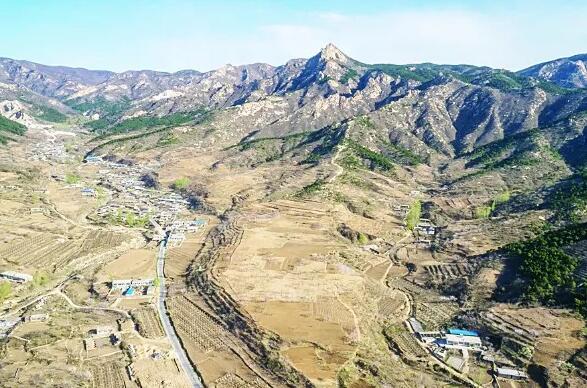
Surrounding landsacpe around the site
Achievements of excavations
Xinli architectural remains from Liao Dynasty were located in Futun Street, Beizhen City, Liaoning Province. According to archaeological prospection on loess platform where the site is situated, there is a set of large building remains in the northern part and a relatively small annex in the southern part. In the southwest side of the northern building, there is a giant tomb (numbered as Xinli M1). In the north of the building remains, a large tomb (numbered as Xinli M2) is uncovered.
This season’s excavation area is in the northern part of the platform, covering about 6000 square meters. A set of building bases of a rather complete courtyard from Liao Dynasty were unearthed. It consists of main palace, gateway of the palace and corridors around them. Outside the building, it was surrounded by a circle of open drainage facilities. The whole building heads southeast.
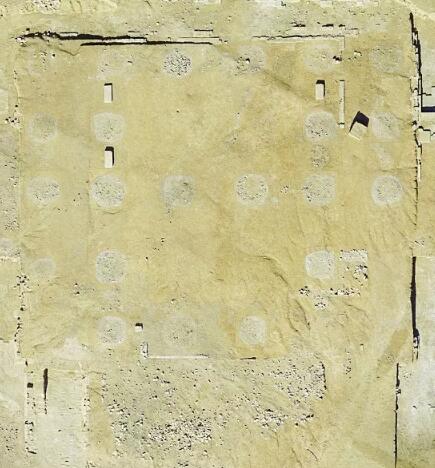
Main Palace
Main Palace
Base terrace of main palace is located right in the northern middle of the courtyard with corridors around, including a large hall and a platform. There should have been a stepway in the south of the platform, which has been already destroyed. The base terrace was paved by black bricks. Large hall is rectangular in plane, 29.6m wide from east to west and 24.2m long from south to north. Its original floor and pillar bases are all gone, only lines of large-sized piers are left. The large hall is 5-rooms in width and 4-rooms in depth. The platform is in the southern middle part of large hall. It has a rectangular plane and is about 19.4m wide from east to west.
Corridor Buildings
Corridor Buildings are bilateral symmetrically distributed in both sides of main palace and palace gate. Together with them, a closed courtyard was formed. Building of north corridor is 24m wide from east to west and 11m long from south to north. There are 5-rooms in width and 1-room in depth. Building of west corridor contains 3 gradually lifting platform bases, which are numbered as No. 1, No. 2 and No.3 respectively. Building of south corridor is 14.7m wide from east to west and 10.2m long from south to north, there is predicted to be a building on the base platform, 2-rooms in width and a-room in depth.
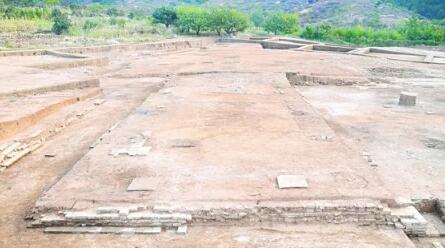
North Corridor Buildings
Gate
The gate is situated in the southern middle of the whole building. The platform is 23.5m wide from east to west and 13m long from south to north. There is predicted to be a building on the platform base with a 5-room width and a 2-room depth. In the southern middle of platform, there is a passage on a slow slope. In the northern middle, there is a stepway.
Courtyard
It is consists of main palace, gate and corridors around. It’s 61.2 long from south to north and 53.3m wide from east to west. From south to north, the courtyard has 3 levels, which are going up gradually, which are numbered as No.1, No.2 and No.3 Courtyards respectively.
Drainage system outside the architecture
Between outside of the building base terrace and trenches of bakette, there was a circle of open drainages pipes with roughly same structures.
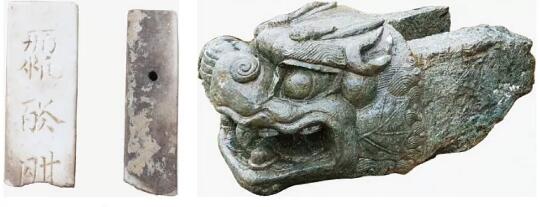
Jade book(left)and stone dragon head
Unearthed artifacts
Architectural components take the largest percentage of artifacts unearthed from excavation, ranging from semi-circular tiles, pan-tiles, eave tiles, pan-tiles on the ceiling, pottery animal heads, owl-like pottery figure, ridge tiles, broken floor bricks made of piebald stone and so on. Most of tiles on the roof are green-glazed tiles, only a few are gray pottery tiles, which indicate that this courtyard is a high-rank architecture decorated with green-glazed tiles. Plenty of broken floor bricks made of piebald stone are unearthed from the periphery of main palace. As a kind of precious stone materials, piebald stone is usually used in the construction and decoration of royal palaces and mausoleum architectures. Pieces of jade books uncovered in main hall in Khitan small scripts and Chinese characters. Other artifacts have white porcelain of Ding Kiln, celadon of Yue Kiln, glass wares and so on, which should be ritual artifacts.
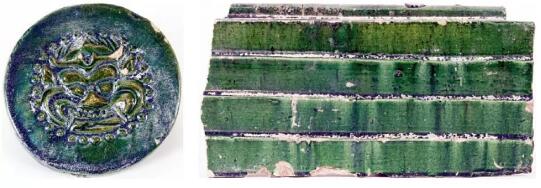
Eaves tile with animal pattern(left)and tiles
Academic Significance
Comparing Xinli courtyard building group in Beizhen City with 3 palace remains in front of Qing Mausoleum from Liao Dynasty in Balinyouqi, they have rather high similarity. Considering high-rank reflected by the buildings and artifacts uncovered, like jade books and so on, it’s safely to say that courtyard architecture group in Xinli, Beizhen is probably sacrificial palace in front of Xuan Palace in Mausoleum from Liao Dynasty.
Based on the above discussion, it’s predicted that Xinli M2 might be Xuan Palace of Qian Mausoleum from Liao Dynasty. Confirmation of Xuan Palace and palace remains in front of Qian Mausoleum is great breakthrough and achievement of Mausoleums archaeology from Liao Dynasty in Yiwulv Mountain. It is the most important step to get an overall understanding of locations, distributions and layouts of cemeteries of two mausoleums in Yiwulv Mountain.
Xinli courtyard architecture group from Liao Dynasty in Beizhen uncovered by large-sized exposure during scientific excavation is representative of rare oriental courtyard architecture in medieval period, providing exceptional materials for research on ancient architectures. (Translator Ma Huanhuan)

